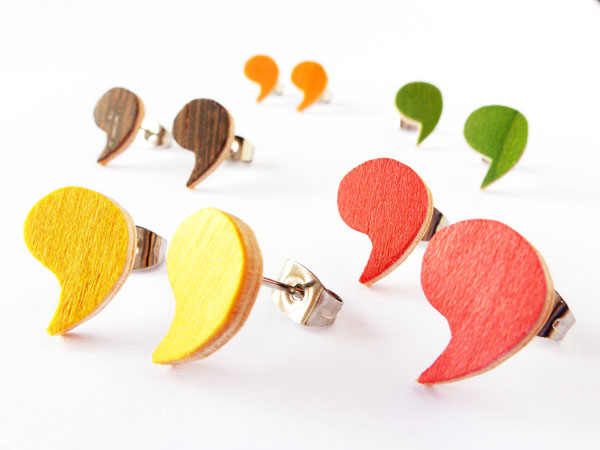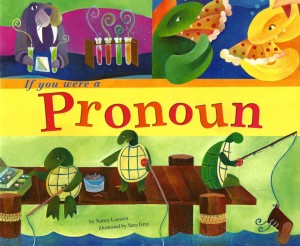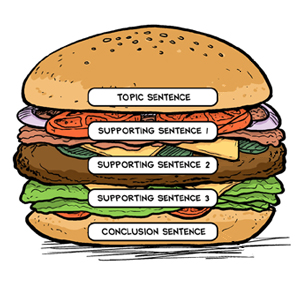Don’t Give Up: 7 Ways To Improve Academic English Writing Skills When You’re A Non-Native Speaker
Academic writing is essential for the researchers, scientists, or even PhD holders. It should be a top priority for those who ambitious to stand out in the competitive world of research. Your research might sound great, but if you can’t write it clearly in a research paper using proper English, you won’t succeed in academia. Why? Of course, you want to show your successful findings to the world, but please bear in mind that a paper full of typos, spelling mistakes, and grammatical errors are not conveying a positive image of you. Good English research paper certainly gives the first impression to the audience instead of your profile or your research details. Thus, abilities to communicate your thoughts are crucial so that you can astound the research communities.
[button open_new_tab=”true” color=”extra-color-3″ hover_text_color_override=”#fff” size=”large” url=”http://wp.me/P6skHY-Oq” text=”If You Need Help In Editing & Proofreading Services, Click Here To Order Now!” color_override=””]
You might realize that most of the prolific writers seem to have a natural talent. But, you don’t know that most of them are all born crappy writers. Don’t lose hope if you’re non-native English speaker as not all the native English speakers are good writers. Remember that only those who have high perseverance spirit will become proficient writers. So, don’t give up easily. Here are the 7 ways to improve academic English writing skills when you’re a non-native speaker.
1. Plagiarism: Don’t Do It
In academic or research world, plagiarism is a serious violation, which not only affect your paper publication, but also endanger your professional career. If you face difficulties in writing your own sentences, you can use direct quotation and legitimate paraphrasing techniques together with citation. Besides, any tables or figures should be correctly cited. If you’re not confident with your own work, you always can seek help from the editing or proofreading services such as EdiThumbs.
[button open_new_tab=”true” color=”extra-color-1″ hover_text_color_override=”#fff” size=”large” url=”http://wp.me/P6skHY-Oq” text=”Each Time You Use Our Services, You’re Helping Us To Support English Education In Underserved & Poor Communities” color_override=”” image=”fa-users”]
2. Over Quotation: Stay Away From It
Direct quotation is one of the writing skills in academic writing and definitely helps you in your academic writing, but over quotation will make your work not original and professional. Please bear in mind that direct quotation is advisable to be used in certain situations, whereby you find it difficult to rewrite the sentences, cannot express the corresponding meaning using your own words, or want to highlight the solid and powerful facts to support your research.
 3. Parallelism: Improve Writing Style
3. Parallelism: Improve Writing Style
Parallelism is the thoughtful repetition of phrases or clauses that have the similar grammatical structure in the sentences. It is one of the powerful writing skills that can boost your writing style indirectly.
- Example of bad parallelism: John likes organic foods, songs from 21st centuries, and playing strategy games.
- Example of good parallelism: John loves eating organic foods, singing modern pop, and playing strategy games.
Can you pinpoint or hear the difference? What causes the dissimilarity between “bad” and “good” parallelism? Of course, both sentences do not have grammatical errors. What makes them a difference to each other is the pattern of grammar in the sentences.
- The bad parallelism doesn’t has attractive writing style and it has a grammatical pattern that looks like this:
“John likes…”
“organic foods,” [Adjective—Object of Preposition]
“songs from 21st centuries,” [Direct Object—Preposition—Adjective—Object of Preposition]
“and playing strategy games.” [Conjunction—Preposition—Adjective—Object of Preposition]
- The good parallelism poses musical and rhythmical element and has a grammatical pattern that looks like this:
“John loves…”
“eating organic foods,” [Gerund—Adjective—Object of Gerund]
“singing modern pop,” [Gerund—Adjective—Object of Gerund]
“and playing strategy games.” [Gerund—Adjective—Object of Gerund]
[button open_new_tab=”true” color=”extra-color-2″ hover_text_color_override=”#fff” image=”default-arrow” size=”large” url=”http://wp.me/P6skHY-NB” text=”How To Order Our Services? Click Here To Know More!” color_override=””]
4. Simple Vocabulary: Build Understandable Content Academic writing involves many technical terms, and it is different when writing a novel. Try to avoid idiomatic expressions, bombastic phrases, flashy words, or synonyms as you might misuse them. Use the simple yet understandable phrase that can clearly show your context with the strong supporting details. You always can refer to the dictionary for any ambiguity.
Academic writing involves many technical terms, and it is different when writing a novel. Try to avoid idiomatic expressions, bombastic phrases, flashy words, or synonyms as you might misuse them. Use the simple yet understandable phrase that can clearly show your context with the strong supporting details. You always can refer to the dictionary for any ambiguity.
5. Pronouns: Connecting Ideas Your academic writing will look tedious if keep repeating the same noun. In order to make the writing more interesting, pronouns such as this, that, these, and those can be used because they are referring to a noun or noun phrase in the former sentences. However, you should make sure that all the pronouns have clear references to prevent confusion.
Your academic writing will look tedious if keep repeating the same noun. In order to make the writing more interesting, pronouns such as this, that, these, and those can be used because they are referring to a noun or noun phrase in the former sentences. However, you should make sure that all the pronouns have clear references to prevent confusion.
[button open_new_tab=”true” color=”extra-color-1″ hover_text_color_override=”#fff” size=”large” url=”http://wp.me/P6skHY-Iq” text=”If You Have Any Inquiries, You Are Most Welcome To Reach Us” color_override=”” image=”steadysets-icon-volume-decrease”]
6. Multiple Sentence Types: Striking Content
Good sentences with correct grammar definitely create attractive content. This can be done by combining multiple sentence types: simple sentence, compound sentence, complex sentence, and compound-complex sentence. Understanding different sentence types is crucial so that you can select and correctly punctuate the right sentences to express your ideas in academic writing.
- Simple sentence comprises just one independent clause, normally end with a full stop, exclamation, or question mark. Example of simple sentence: Customer segments are crucial in a business.
- Compound sentence is the combination of simple sentences using a comma or a word like: and, so, yet, but.
Example of compound sentence: Customer segments and value propositions are crucial in a business. - Complex sentence is the combination of independent and dependent clauses. The dependent clause in the following example is in an italic form.
Example of complex sentence: Although customer segments and value propositions are crucial in a business, we can’t simply ignore the channels. - Compound-complex sentence is the combination of compound sentence and complex sentence.
Example of compound-complex sentence: Although customer segments and value propositions are crucial in a business, we can’t simply ignore the channels, or your business cannot sustain for a long time.
 7. Paragraphs: Create Compelling Storyteller
7. Paragraphs: Create Compelling Storyteller
Paragraphs reflect the flow of your context from one idea to another idea. Every paragraph should comprise clear and single idea with relevant details only to avoid confusion. A paragraph should comprise 3 main part: Introduction of the main idea, supporting details of a main idea, and conclusion of the main idea.
[button open_new_tab=”true” color=”extra-color-2″ hover_text_color_override=”#fff” image=”default-arrow” size=”large” url=”http://wp.me/P6skHY-Oq” text=”Your Manuscripts Will Be Crafted With Care. Click Here To Order NOW” color_override=””]
Do you have any extra tips on how to improve academic English writing skills? You’re most welcome to comments!



